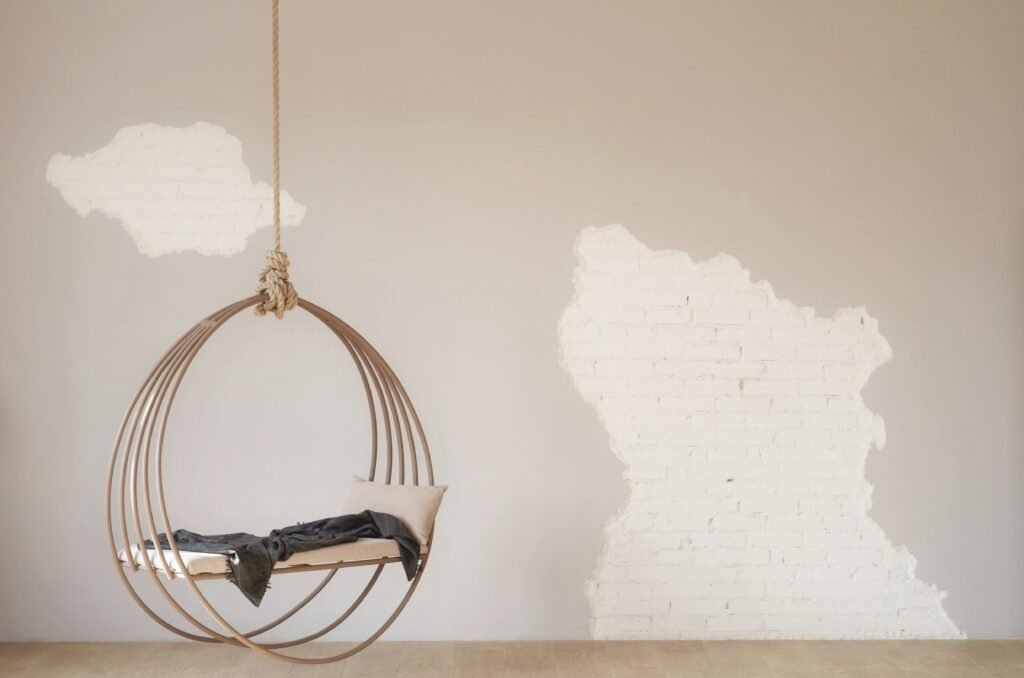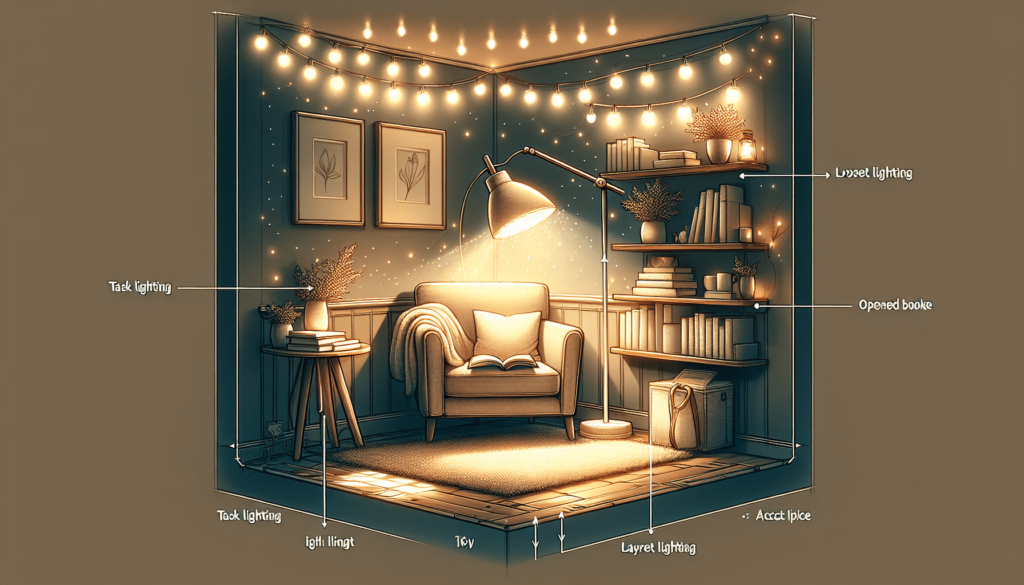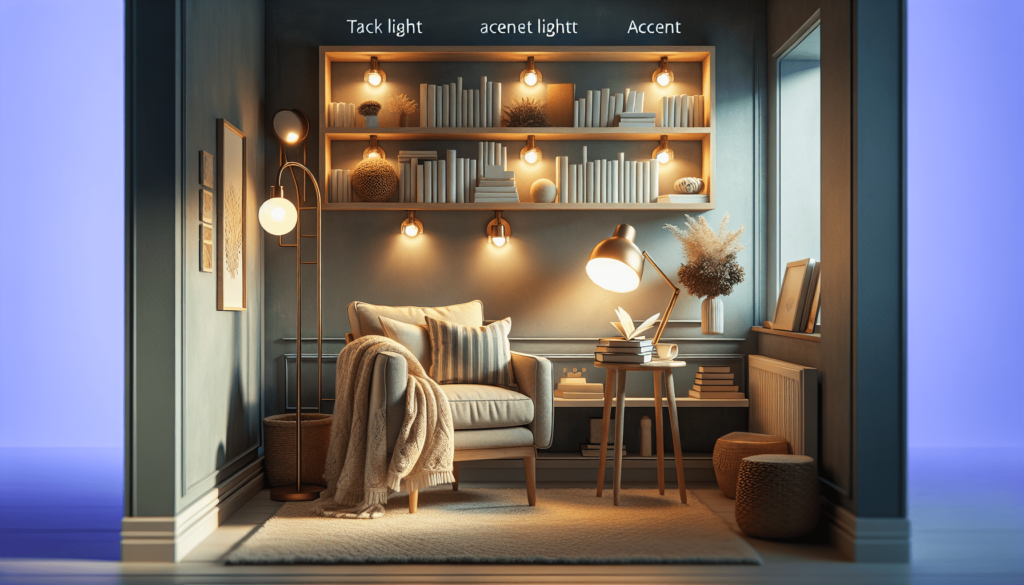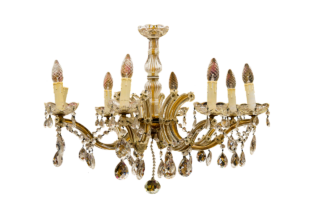Looking to enhance the atmosphere of your compact living space? Look no further! This article provides practical and illuminating tips on how to create the perfect lighting in small areas. Whether you reside in a cozy apartment or have a tiny nook that needs a touch of brightness, these expert suggestions will help you transform your space into a well-lit haven. Discover how to maximize natural light, choose the ideal fixtures, and strategically position lighting elements to make the most of your small area. Get ready to bring a radiant and inviting ambiance to even the tiniest corners of your home.

Types of Lighting
Task Lighting
Task lighting is essential in small spaces as it provides focused illumination for specific activities. Whether you’re working at a desk, reading a book, or preparing meals in the kitchen, task lighting ensures that you have adequate light to complete your tasks efficiently. Desk lamps, pendant lights, and under-cabinet lighting are all examples of task lighting that can be used in small areas.
Ambient Lighting
Ambient lighting, also known as general lighting, is the primary source of illumination in a room. It provides overall brightness and sets the mood for the space. In small areas, ambient lighting can be achieved through ceiling-mounted fixtures, such as flush mount or semi-flush mount lights. Consider using adjustable fixtures or track lighting to distribute the light evenly and create a spacious feel in a compact room.
Accent Lighting
Accent lighting is used to highlight specific features or focal points in a room. It adds depth and visual interest to the space. In small areas, accent lighting can be particularly effective in creating a sense of depth and making the room appear larger. Use recessed spotlights or track lighting to illuminate artwork, shelving units, or architectural details. Consider installing LED strip lights under cabinets or along wall edges to add a touch of elegance to the space.
Consider Natural Lighting
Maximize Natural Light
Natural light can make a small space feel bright and welcoming. Take advantage of any available windows by choosing window treatments that allow maximum sunlight to enter the room. Avoid heavy drapes or dark-colored blinds that can block the natural light. Instead, opt for light-colored curtains or blinds that let light in while still providing privacy.
Use Light-Colored Curtains or Blinds
Light-colored curtains or blinds can help reflect and diffuse natural light, making a room feel more spacious. Opt for sheer curtains or blinds that allow light to pass through while maintaining privacy. Light-colored fabrics and materials also have the added benefit of enhancing the overall brightness of the space.
Avoid Blocking Windows
Ensure that no furniture or other objects obstruct the natural light coming through the windows. Arrange your room layout in a way that allows sunlight to reach every corner of the space. If necessary, consider rearranging furniture or using space-saving alternatives to ensure that the windows remain unobstructed.

Choose the Right Light Bulbs
Determine the Light Bulb Color Temperature
The color temperature of a light bulb can significantly impact the ambiance of a room. In small spaces, it is important to choose the right color temperature to create the desired atmosphere. Cool white or daylight bulbs (5000K-6500K) can make a space feel brighter and more expansive. On the other hand, warm white bulbs (2700K-3000K) create a cozy and intimate ambiance, perfect for relaxing or unwinding.
Select the Appropriate Light Bulb Brightness
The brightness of the light bulb, measured in lumens, should be considered carefully when lighting a small area. In general, brighter bulbs are more suitable for task lighting, while softer and dimmer bulbs work well for ambient or accent lighting. Ensure that the light bulbs you choose provide adequate brightness for the tasks at hand while still maintaining a comfortable and inviting environment.
Opt for Energy-Efficient LED Bulbs
LED bulbs are an excellent choice for small spaces due to their energy efficiency and long lifespan. They produce less heat compared to traditional incandescent bulbs, making them safer and more cost-effective. LED bulbs are available in a variety of colors and brightness levels, allowing you to create the perfect lighting scheme for your small area while saving on energy consumption.
Utilize Mirrors
Place Mirrors Strategically
Mirrors are an effective way to reflect and amplify light in a small space. Place mirrors strategically across from windows or other sources of natural light to bounce the light around the room. This not only creates the illusion of a larger space but also enhances the overall brightness. Experiment with different mirror sizes and shapes to find the most visually appealing arrangement.
Use Mirrored Furniture or Accessories
In addition to traditional mirrors on the walls, consider incorporating mirrored furniture or accessories into your small space. Mirrored surfaces can reflect light from various angles, making the room appear more open and airy. Look for mirrored side tables, cabinets, or decorative items that not only serve a functional purpose but also enhance the lighting and aesthetics of the room.

Use Layered Lighting
Mix Different Types of Lighting
Layered lighting involves combining multiple sources of light to create a well-balanced and visually appealing space. In small areas, this technique is particularly beneficial as it adds depth and dimension to the room. Combine task lighting, ambient lighting, and accent lighting to achieve the desired effect. By using multiple light sources, you can customize the lighting according to your specific needs and create the perfect atmosphere for any activity.
Place Lights at Different Heights
To create a sense of depth and make a small space appear larger, consider placing lights at different heights throughout the room. This helps to draw the eye upward and adds visual interest to the space. Use pendant lights, wall sconces, or tall floor lamps to add verticality and create a more dynamic lighting arrangement.
Install Dimmer Switches
Dimmer switches are a smart addition to any small space. They allow you to adjust the brightness of the lights according to your mood or the time of day. Dimming the lights can create a soft and cozy ambiance, making the room feel more inviting. It also enables you to conserve energy when full brightness is not necessary.
Opt for Space-Saving Lighting Fixtures
Choose Wall Sconces or Swing Arm Lamps Instead of Table Lamps
In small areas where surface space is limited, wall sconces or swing arm lamps can be excellent alternatives to traditional table lamps. These fixtures can be mounted on the walls or attached to furniture, freeing up valuable tabletop space while still providing ample illumination. Look for compact and adjustable designs that can be easily repositioned to meet your specific lighting needs.
Consider Track Lighting or Recessed Lighting
For seamless and space-saving lighting solutions, track lighting or recessed lighting can be highly effective in small areas. Track lighting allows you to direct light wherever it is needed, providing flexibility and customizable illumination. Recessed lighting, on the other hand, remains hidden within the ceiling, creating a clean and uncluttered look while still providing ample lighting.

Avoid Harsh Shadows
Position Lights Properly to Eliminate Shadows
To avoid harsh shadows in a small space, it is essential to position light fixtures strategically. Consider the angle and direction of the light to ensure that it illuminates the entire room evenly. Wall-mounted lights, pendant lights, and lamps with adjustable heads can be effective in eliminating shadows and providing a well-balanced lighting scheme.
Use Diffusers or Lampshades to Soften the Light
If the light source feels too harsh or glaring, consider using diffusers or lampshades to soften the light. These accessories can help to distribute the light more evenly and create a warm and cozy atmosphere. Choose frosted or fabric lampshades that allow diffused light to pass through, which can be particularly advantageous in small spaces.
Highlight Vertical Space
Install Wall-Mounted Lights or Uplights
To maximize the vertical space in a small area, consider installing wall-mounted lights or uplights. These fixtures can highlight architectural details, such as textured walls or exposed brick, creating a visually appealing focal point. By directing the light upwards, the ceiling will appear higher, giving the illusion of a more spacious and open room.
Use Vertical Light Fixtures
Vertical light fixtures, such as tall floor lamps or pendant lights, can also draw the eye upward and create a sense of verticality in a small space. Look for slim and sleek designs that do not take up excessive floor space. These fixtures not only provide additional lighting but also add an element of style and sophistication to the room.

Create Visual Interest
Use Lighting to Highlight Artwork or Decorative Objects
Incorporating lighting to highlight artwork or decorative objects can instantly elevate the aesthetics of a small space. Use adjustable spotlights or picture lights to direct focused illumination onto paintings, sculptures, or other cherished pieces. This not only accentuates the beauty of the artwork but also adds a layer of visual interest to the room.
Consider Pendant Lights or Chandeliers as Statement Pieces
Make a bold statement in your small space by incorporating pendant lights or chandeliers. These lighting fixtures not only provide ample light but also serve as eye-catching focal points. Opt for compact designs that do not overwhelm the space, and consider the overall style and theme of the room. Pendant lights or mini chandeliers can add a touch of elegance and sophistication to any small area.
Pay Attention to Color Temperature
Choose Cool White or Daylight Bulbs to Make a Space Feel Brighter
To create the illusion of a brighter and more expansive space, choose cool white or daylight bulbs with a color temperature between 5000K and 6500K. These bulbs emit a crisp and refreshing light, making the small area feel more open and inviting. Consider using them in task lighting or areas where a bright and vibrant atmosphere is desired.
Opt for Warm White Bulbs to Create a Cozy Ambience
For a small space that aims to create a cozy and intimate ambiance, opt for warm white bulbs with a color temperature between 2700K and 3000K. These bulbs emit a soft and warm glow that adds warmth and comfort to the room. Use them in ambient or accent lighting to create a welcoming and relaxing atmosphere.
In conclusion, creating the perfect lighting in small areas requires careful consideration of different lighting types, natural light utilization, light bulb selection, and the strategic placement of mirrors, layered lighting, and space-saving fixtures. By following these tips and techniques, you can transform your small space into a well-lit and visually appealing environment. Whether you’re looking to make the room appear larger, highlight specific features, or create a cozy atmosphere, the right lighting can make all the difference. Experiment with different lighting options, be creative, and most importantly, prioritize the functionality and aesthetics that best suit your personal taste and needs.



